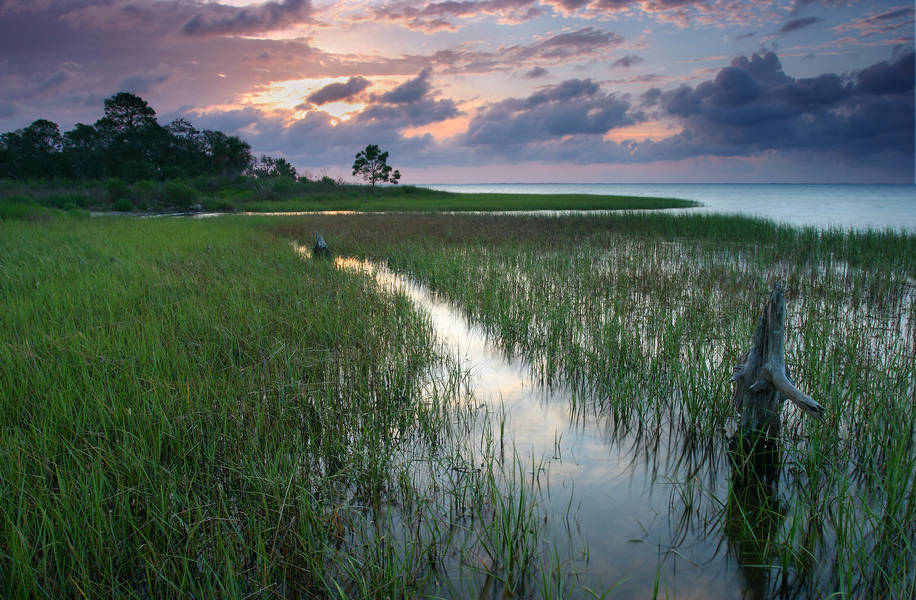DEP processes applications under Section 404 of the Clean Water Act within state-assumed waters, and the USACE processes Section 404 applications within retained waters (see below).
Under section 404 of the Clean Water Act, states may assume authority to implement the section 404 dredge and fill permitting program only for certain waters. These waters are called “state-assumed waters” or “assumed waters” under the State 404 Program. State-assumed waters include all Waters of the United States (WOTUS) where section 404 permitting authority is not retained by the USACE. Waters where permitting authority is retained by the USACE are called “retained waters.”
The definition of retained waters, as stated in the State 404 Program Applicant’s Handbook, is:
“Those waters which are presently used, or are susceptible to use in their natural condition or by reasonable improvement as a means to transport interstate or foreign commerce shoreward to their ordinary high water mark, including all waters which are subject to the ebb and flow of the tide shoreward to their mean high water mark, including wetlands adjacent thereto. The Corps will retain responsibility for permitting for the discharge of dredged or fill material in those waters identified in the Retained Waters List (Appendix A), as well as all waters subject to the ebb and flow of the tide shoreward to their mean high water mark that are not specifically listed in the Retained Waters List, including wetlands adjacent thereto landward to the administrative boundary. The administrative boundary demarcating the adjacent wetlands over which jurisdiction is retained by the Corps is a 300-foot guideline established from the ordinary high water mark or mean high tide line of the retained water. In the case of a project that involves discharges of dredged or fill material both waterward and landward of the 300-foot guideline, the Corps will retain jurisdiction to the landward boundary of the project for the purposes of that project only.”
The USACE also retains permitting authority for projects within “Indian country” as that term is defined at 18 U.S.C. § 1151.
For the purposes of determining retained or state-assumed waters, the boundary of a mitigation bank, excluding the service area, shall be considered the project boundary, even if only a portion of the bank requires a dredge and fill permit under Section 404 of the CWA.
Retained Waters Screening Tool
This mapping tool is a depiction of the approximate extent of federally retained waters, along with a 300-foot guideline, as well as Indian Country, as defined by the Memorandum of Agreement (MOA) between DEP and the USACE. The map contains a screening widget which allows users to draw shapes or upload shapefiles that represent dredge/fill footprints in order to determine if 404 permitting jurisdiction for a project will be retained by the USACE (footprints fully or partially within Retained Waters and/or Indian Country) or assumed by the state of Florida (footprints entirely outside of Retained Waters and Indian Country). The Retained Waters layer was created by combining four datasets to represent waters named on the Retained Waters List and shorelines of waters subject to the ebb and flow of the tide (more information in the layer’s metadata). The Indian Country layer was obtained from the U.S. Department of Interior's Bureau of Indian Affairs’ American Indian and Alaska Native Land Area Representation map. Both layers are subject to change if new information becomes available. The accuracy of these layers is not guaranteed and cannot be used as official boundary or survey lines; they are solely intended to assist with the initial screening of an application. With Florida’s State 404 Program in place, the final determination of 404 permitting jurisdiction can only be made by comparing actual observations of the site to the text of the MOA (e.g., measurement of ordinary high water mark or mean high tide line for Retained Waters, status and boundaries of the property for Indian Country).
The definition of “adjacent” in the Navigable Waters Protection Rule at 40 C.F.R. 120 applies when determining whether a water within the 300-foot guide line is retained or assumed. If a water falls within the guide line, but is not “adjacent” to the retained water to which the guide line is applied (for example, it is separated from the retained water by an upland and there is no culvert or other connection to the retained water), then the 404 application for the project will be processed by DEP.


